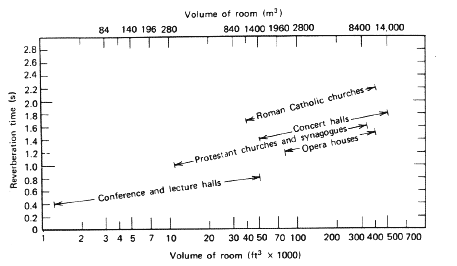
Acoustics



 Clarity
Clarity |
Clarity, the acoustical opposite of fullness, is obtained when the intensity of the reflected sound is low relative to the intensity of the direct sound. Great clarity is required for optimum listening of speed and is particularly important when performing early orchestral music, such as the fast movements of Mozart's symphonies. In designing a symphony orchestra hall, it is necessary to strike a compromise bewteen fullness and clarity to allow adequate performance of both early and later music. In general, greater clarity implies a shorter reverberation time.
 |

Ch. Elster